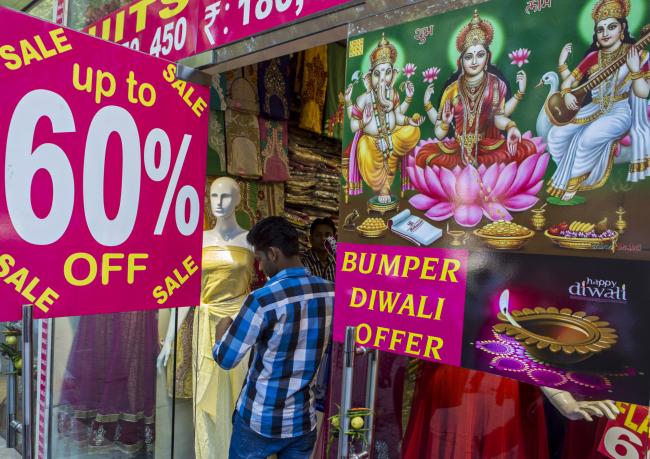(Bloomberg) -- There’s not a moment of respite for India’s inflation-targeting central bank.
Just when gains in consumer prices eased, the Turkish lira-led sell-off in emerging-market currencies has renewed an onslaught on the rupee, pushing it to a record low and possibly demanding more rate action from the Reserve Bank of India.
The rupee dropped to as low as 70.08 per dollar on Tuesday, keeping its position as Asia’s worst-performing currency this year intact. It recouped some of the losses to trade at 69.8525, with traders saying state-run banks sold dollars, probably on behalf of the RBI, as the currency weakened past the 70-per dollar mark.
“Deteriorating emerging-market sentiment has led to a panic in the rupee,” said Paresh Nayar, the Mumbai-based head of currency and money markets at the local unit of South African lender FirstRand Ltd. The price action suggests the RBI might have intervened to prevent a bigger run on the rupee, he said.
A weaker currency complicates the central bank’s job of keeping prices in check, as it makes imports costlier. The monetary policy committee led by Governor Urjit Patel increased interest rates twice since June to curb rising price pressures, while the RBI depleted $23 billion in foreign reserves to check currency volatility.
Government data on Monday showed retail inflation quickened 4.17 percent in July from a year earlier, slower than the 4.5 percent median estimate in a Bloomberg survey of economists.
“The weak rupee is indeed making life difficult for Patel and his fellow members of the monetary policy committee,” said Hugo Erken, a senior economist at Rabobank International in the Netherlands. “The RBI tightening cycle will put an end to the current free fall.”
A selloff in Turkey’s lira spread to other emerging-market currencies, with the rupee adding to Monday’s 1.6 percent loss -- which was its biggest since September 2013. Earlier this month, the RBI raised rates to the highest in two years against the backdrop of an economy that’s growing faster than any other major nation.
Indian sovereign bonds were trading slightly higher. The yield on the benchmark 10-year notes was down 1 basis point at 7.81 percent after rising seven basis points on Monday.
Global risks, such as high oil prices and trade tensions, are weighing on the growth outlook, the International Monetary Fund said in its recent report on India that likened the economy to an elephant that’s started to run. Despite the headwinds, the latest high-frequency indicators like the purchasing managers’ surveys show that India’s start to the July quarter has been strong.
“The good old issues of large unhedged exposure, worsening current-account deficit, worries on fiscal deficit and uncertainty heading into elections” are playing out once again in the backdrop of general concern around emerging markets, said Gopikrishnan MS, head of foreign exchange, rates and credit for South Asia at Standard Chartered Plc in Mumbai. With fresh pressure on EMs, the rupee is expected to move in a range of 71-72 against the dollar, he said.
The central bank’s position is that it does not target the exchange rate and is mandated to keep inflation at the 4 percent midpoint of its targeted band in the medium term. The RBI raised inflation forecast for the six months to March 31 to 4.8 percent from 4.7 percent.
